One of the biggest concerns out there for travelers heading to Mexico or Central America is that big question about personal safety and security. All we ever tend to hear on the news is bad news that makes us fearful… So what’s the reality like on the ground in terms of what are the safest countries in Central America? It makes sense, of course, to lean toward safer destinations rather than unnecessarily placing yourself in harm’s way in a dangerous area.
After having traveled extensively throughout the entire region in areas that are both on and very far from the tourist trail, I feel like I have a pretty good idea of the general level on safety and security in each country.
I should note that safest does not necessarily indicate coolest or most interesting, either… If you want my take on that, then please read my article about the best countries in Central America for travelers.
Before we get into the list of the safest countries in Central America though, it would be helpful to speak about some general concerns about safety in Central America, as well as exactly how I am making these judgments about a place.
First, let’s get a few disclaimers and caveats out of the way:
This list is specifically about the safest countries in Central America FOR travelers. This is a very important distinction because local violence (particularly drug-related violence) almost never impacts tourists or travelers.
Furthermore, for the most part, foreigners largely get a “pass” when it comes to this type of instability and violence. Your experience as a tourist in El Salvador is very different from the experience of those living in poverty on the margins of society and who are most heavily impacted by insecurity, drug violence, gangs, etc.
The biggest worries for tourists throughout the region is avoiding being the target of theft or robbery (which is a legitimate concern here) but not outright violence.
My own ranking of the safest and most dangerous countries in Central America is entirely subjective and is not based on statistical violence (again which largely impacts ONLY locals) but is based on my own perceptions as well as anecdotal evidence from my fellow travelers and conversations with them.
That being said, I’ve traveled to a variety of places that are frequently perceived as dangerous (like Yemen, Colombia, Mexico) which color my own perception of risk and danger. Prior to my life as a nomadic traveler, I also lived in big cities like Seattle or Washington DC which have their own safety concerns. That’s all to say that if you’ve never left your small hometown, you might feel more worried, concerned, or cautious in ANY of these destinations, than another more experienced traveler.
It’s also important to note that NOTHING at all happened to us during our lengthy travels driving across Central America. That means no theft, violence, robbery, etc. So again, this is based on my perception of safety and insecurity, although ALL of these countries are perfectly safe for tourists so long as you exercise a bit of street sense, and most importantly, the vast majority of the places where most tourists will be traveling (not like us, driving across the entire regions and countries, well off the beaten path) are even safer still.
Furthermore, I’m trying to generalize about the country as a whole… Obviously, within any country, there are areas that are safer or more dangerous, just as there are areas within any city that are safer or more dangerous. If you are going to somewhat popular destinations in any of these countries then you are quite safe. But things can and do happen anywhere, even in some of the world’s “safest” destinations.
You didn’t “get lucky” if you went to these places and nothing happened to you (as some have said to me)… That’s a normal experience. Unlucky would be those isolated incidents where something bad happens. You SHOULD exercise street smarts, of course, but any short term travels (whether a few weeks or a few months) are unlikely to result in you being unlucky. The probabilities do go up the longer you stay in Latin America, of course.
MOST IMPORTANTLY: Don’t take my word as gospel, do more research, read more opinions, talk to other travelers. This is simply my honest take on the question, based on my experiences, perceptions, and those I have discussed the issue with (who have traveled extensively in the region)…
In any case, let’s get on to my list of the safest countries in Central America, starting from the perceived most dangerous to the perceived safest.
Mexico
I’m including Mexico within this list because geographically it is partially within Central America, and the United Nations considers it part of the Central American geoschema. Not only that, but it also provides a good framework or baseline for evaluating the other countries in Central America since more travelers are familiar with Mexico than with its neighbors to the south.
Mexico is incredible, without a doubt. Out of all our time in Mexico and Central America, Mexico easily stands out as the “best” place to travel simply because of the sheer variety of things it has to offer. From beaches, mountains, cities, food, culture, low costs, on and on.
It is also, unfortunately, what I would consider being the most dangerous of any of the countries in the region, and again, I’m not considering anything to do with drug violence and the reality that many locals face.
The perceived insecurity of traveling in Mexico runs across much of the country, from the problems near the border related to drug trafficking to well into the interior in areas not as readily affected by the drug trade.
Sometimes the bad guys even dress up as fake police to pull people over and rob them, especially in dysfunctional states like Sinaloa… One high profile case included the Australians who were murdered in one such situation and then burned along with their van.
The police in Mexico, for the most part, don’t do much, although I did see the police chase after the bad guys once… When there was a high-speed chase and a shootout with the police outside of our apartment in an upscale part of Mexico City. We could smell the gunpowder. Yeah, kind of crazy. The only time I’d ever previously heard gunfire was back on the mean streets of DC.
Further south in Oaxaca and Chiapas, there were numerous blockades by angry locals (we had to get through at least five) who would try to extort money from those passing by. Some of those blockades weren’t menacing (usually the whole town comes out, including grandmas and grandpas), but there was at least one in the middle of nowhere with just a couple guys in the jungle with boards.
This is an autonomous region where there is a general lack of rule and order. Police don’t do anything to help or control the situation. There have been times where those blockades have turned violent. Check out this Vlog on YouTube for an idea of what it is like…
It was also here where two people bicycling across Mexico were murdered and thrown in a ravine. Of course, the inept or corrupt police initially said that both riders plummeted to their deaths over a cliff, but that was quickly discovered to be a lie.
Mexico is certainly the one country where most travelers have been killed in the region, either in attempted robberies or other strange circumstances. Mexico was amazing, without a doubt, but I would also consider it the most dangerous country in the region for travelers.
Mexico is also the one country (in all of Latin America, actually) where we had the most problems with corrupt police, having to fight with them on numerous occasions to avoid giving them money. At times, it seems like they focus more on extorting people than protecting them.
That being said, I don’t think Mexico is inherently dangerous… Beyond the run-ins with police and the blockades, there was nothing alarming of note for us. For the most part, everything is safe and sane, especially for those who are primarily visiting the popular tourist areas and not going so far off the beaten path as we did.
It’s important to remember that 1) Mexico is the third most populous country in the Western Hemisphere (behind the United States and Brazil), and 2) it is the sixth most popular tourist destination in the world, with millions of visitors every month and yet there are few serious incidents among tourists. All of this just goes to show you that we can objectively observe that it is actually quite safe — even if it perhaps subjectively feels to be the least safe of all these countries.
Unless you’re unlucky, you’re still unlikely to experience anything more than subtle and not-so-subtle attempts to get money out of you.
Read More: Guide to Traveling to Mexico
El Salvador
El Salvador has a huge vibe of insecurity that makes it hard to tell if it is a remnant from bad days in the past or a reality of the bad days of the present.
I mean, in El Salvador you will see guns all over the place, even armed guards standing on the back of Coca-Cola delivery trucks… Which makes you think they are either safest Coca Cola drinks and delivery trucks in the world or things are just THAT bad in El Salvador that they need armed guards on the back of a beverage truck.
On one hand, you think all these armed guards everywhere must mean you’re super safe here, or things could go really wrong here at any moment…
All over the country, you will encounter tons of places which are basically fortified little palaces, whether they are hotels with huge walls, heavy locked doors, barbwire, and so forth, or even entire small tourist towns which are gated communities with controlled entry points and other perimeter security.
I loved El Salvador, but it definitely has a strange feeling of insecurity almost everywhere.
Read More: Places to Visit in El Salvador
Panama
When we think of Panama, we think of the canal and the gleaming towers of Panama City, but there is also a whole country beyond that.
Panama, on the whole, feels fairly safe, but there is also the occasional vibe of insecurity, even beyond the obvious things like the slum towns in Panama City.
One of the strangest encounters on our whole trip was searching for a hotel in a nondescript little town… We had to get buzzed into the property (again those gated wall things) and then, even inside, the women working were behind a locked metal gate.
They assured us they had rooms available, and we asked if it was safe here to park the truck here (outside the gate) and they said: “Oh yes, of course, very safe.” So then we asked if we could see a room and through the bars, they handed us a worn down old photo of a room…
“Uh, can you show the actual room we’d be getting, please?” “Ah no, we don’t open the gate for security reasons…”
Say what?
Here we were, locked inside their hotel compound, and still, they wouldn’t open the door to the office/house for safety reasons… It was among the most bizarre experiences of the trip and we promptly left to find something, anything else.
Instead, we found some seedy hotel with a Chinese inspired name and then we meekly tucked into our dimly lit room for a few hours of sleep below the gentle whir of the overhead fan shaking and rocking side-to-side.
Panama, perhaps due to its large population of expats, has also seen an alarming number of incidents that reverberates through the news… Although perhaps the most shocking was a serial killer (who turned out to be an American expat) murdering people in Bocas del Toro.
Like everywhere else here, Panama felt safe for the most part, but there were times that just felt a little “off” and made you question or doubt things, at least more so than some other places in the region.
Read More: Places to Visit in Panama
Honduras
Yes, Honduras is home to one of the most violent cities in the world today… But it is important to realize that that sort of violence in mostly within the impoverished communities and does not directly impact tourists, especially when they are not traveling to the poorest areas or involved with the drug trade.
Honduras is much like the rest of Central America, friendly and welcoming, and with a bit of street smarts, you should be absolutely fine.
The one thing that struck us was the sheer amount of visible poverty compared to other countries and the number of people basically begging for money on the side of the road… They would stand around with shovels and pretend like they are filling in potholes while putting their hand out to every passing car… This is something we never saw in any other country.
Is Honduras safe? For many locals the answer may be a resounding no, but for tourists I think it is a destination that is just as safe or safer than some neighboring countries.
Belize
Belize stands out as unique among the rest of Central America due to the sheer amount of diversity of people and cultures within this small country… The entire country is only around 375,000 people or the size of a mid-size city, and yet there are so many incredible places to visit in Belize.
And within that you’ve got the descendants of former African slaves, indigenous Mayan, Mestizo, German Mennonites rolling around in horse-drawn carriages, and a huge influx of Taiwanese merchants. Not only that, but the official language is English and they use the dollar. It’s an almost surreal mix.
Belize itself felt quite safe, with the exception of Belize City, and the people along the coast or out on the islands are quite friendly and welcoming (those in the interior, not so much). Belize City is actually quite sketchy and is perfectly fine to avoid unless you need to visit for a trip to the islands or the airport.
There’s really nothing to report here about insecurity across the country, but you should always use common sense… The worst thing here was maybe the sometimes cold manner that locals treated outsiders when you were in interior parts of the country or off the beaten path.
Read More: Is Belize Safe? Tips and Advice
Nicaragua
Despite recent political unrest and the tumultuous history with Sandinistas, the country of Nicaragua always felt quite safe as we traveled along the Pacific edge of the country…
Of course, as with anywhere else in Latin America, one should exercise caution when in the big cities, such as Managua or when wandering around after dark in places like San Juan del Sur, Leon, or Granada.
One thing of note here was the sheer amount of public drunkenness and alcoholics we saw in this country… I mean, there would literally be guys passed out on the sidewalk in the middle of the day along busy stretches of road like the walkway in front of the San Juan del Sur beach.
But that being said, we felt safe pretty much wherever we went and had no major worries while traveling through Nicaragua.
Read More: Places to Visit in Nicaragua
Guatemala
Guatemala is not only what I would consider one of the safest countries in Central America, but also one of the most interesting (there are a ton of amazing places to visit in Guatemala)… And as a plus, it is super affordable!
For those reasons (safe, interesting, affordable), I’d pick Guatemala as one of the best destinations for a budget traveler heading to Central America for the first time.
While there may be Bandidos in some more remote stretches of Guatemala, particularly in the border areas, the problems that most tourists face here in Guatemala are more likely to be things like being overcharged, gouged for tourist prices, or perhaps some gastrointestinal challenges (but that happens throughout the region).
Our biggest worry while driving through the country was the sheer amount of monster size potholes in the road and getting stuck driving at night thanks to delays, but most travelers won’t have to worry about those things.
Read More: Places to Visit in Guatemala
Costa Rica
And finally, what I would consider being the safest destination in all of Central America… Costa Rica! Yes, there is a reason why this country has long been popular with foreign retirees and as a destination for fun-filled family vacations… Not only is it a paradise for nature and wildlife lovers, but it is also relatively safe and secure.
Costa Rica was where we felt the safest to truly venture down unknown and remote roads, to camp freely in public spaces rather than in paid, secured campgrounds, and so forth.
Of course, that doesn’t mean things don’t happen here in terms of pickpockets, theft, and other crime, but for the most part tourists don’t face the same risks of violent crime like they do in other countries in the region (or really throughout most of Latin America) and it is much lower odds (although things do happen and sometimes it just comes down to bad luck).
Costa Rica is, unfortunately, super expensive, so just bear that in mind… But thanks to the general feeling of safety here, we felt free to pretty much explore wherever we wanted.
More than anything, you should exercise increased caution when you’re in the big city of San Jose… I remember my first time visiting Costa Rica when a travel companion had his camera stolen out of his backpack while we were walking down the street (someone carefully opened the zippers behind him).
Also, be aware that thieves are known to especially target rental cars because they know that tourists are more likely to leave belongings behind in the vehicle.
Read More: Places to Visit in Costa Rica
The Safest Countries in Central America
So there you have it, what I would consider being the safest countries in Central America along with what I would consider being the most dangerous countries in Central America. The asterisk here though is that things can and do happen pretty much anywhere, you should always exercise some level of caution about your surroundings, never flaunt valuables and all of that.
Furthermore, I’ll just repeat that within each and every country there are areas that are super safe and others that one probably shouldn’t visit, same goes within individual cities and towns.
My tip is to research where you will be going and then talk to friendly locals when you get there about where you are going, what to watch out for, and so forth. The locals know better than any book or blog when it comes to safe or unsafe areas in their city or region (but don’t believe them when they start talking about other countries, usually that they’ve never been to).
The vast majority of local people are happy to have you visiting their country and want to make sure that you have the safest and most pleasant visit possible.
The bottom line is that every single country in this region is perfectly safe to visit and you shouldn’t be overly worried or fearful here… You’re probably more likely to experience some sort of violence during your lifetime at home than you would on a relatively short trip through this region.
If you’ll be traveling to Central America soon, don’t miss my budget travel tips, and don’t forget to purchase travel insurance with World Nomads to protect yourself against injury, illness, and theft. The vast majority don’t run into any problems on their travels, but it’s good to protect yourself just in case.
Share This
Did you enjoy this post with my opinions about the safest countries in Central America? Take a second to share it Pinterest, Facebook, or Twitter. Thanks!
Ryan
Latest posts by Ryan (see all)
- Kazakhstan Food: Exploring Some of its Most Delicious Dishes - August 7, 2023
- A Self-Guided Tour of Kennedy Space Center: 1-Day Itinerary - August 2, 2022
- Fairfield by Marriott Medellin Sabaneta: Affordable and Upscale - July 25, 2022
- One of the Coolest Places to Stay in Clarksdale MS: Travelers Hotel - June 14, 2022
- Space 220 Restaurant: Out-of-This-World Dining at Disney’s EPCOT - May 31, 2022

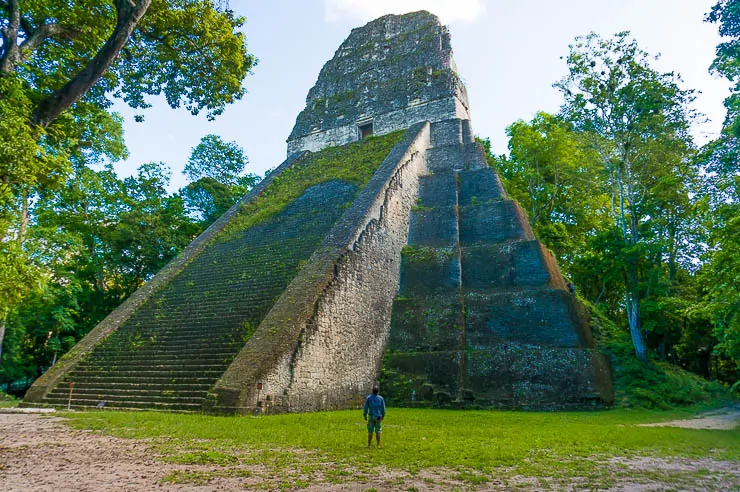
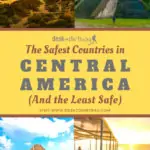
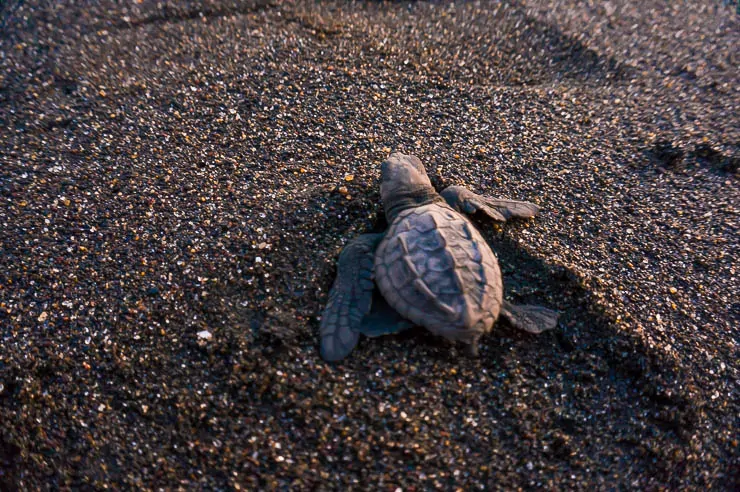
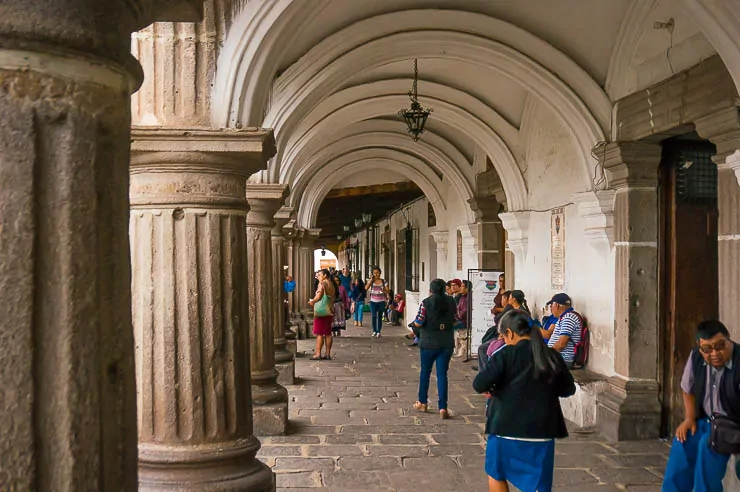
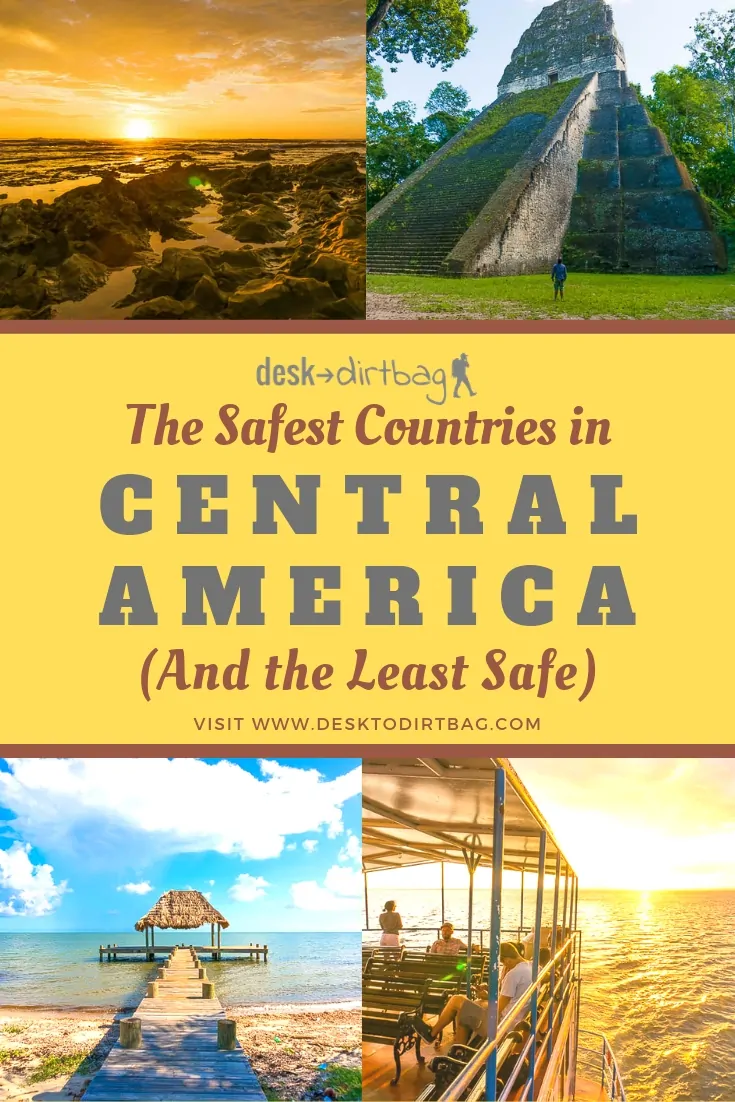
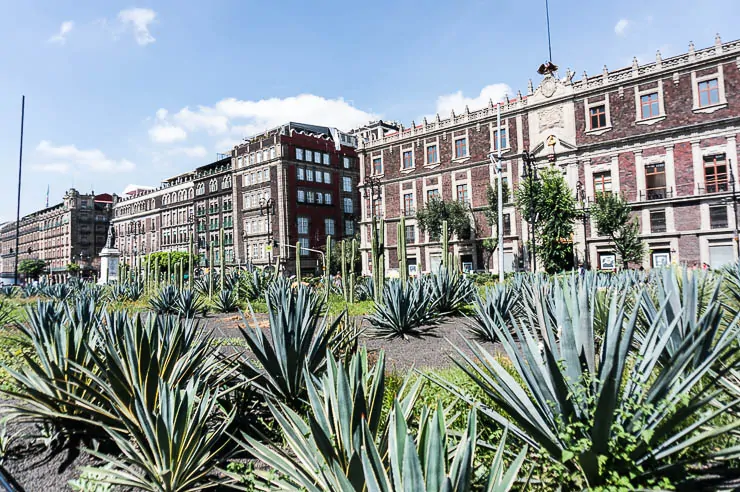
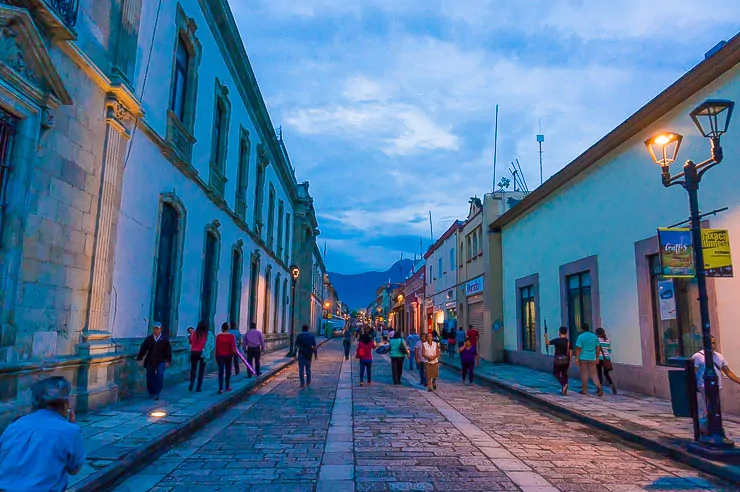
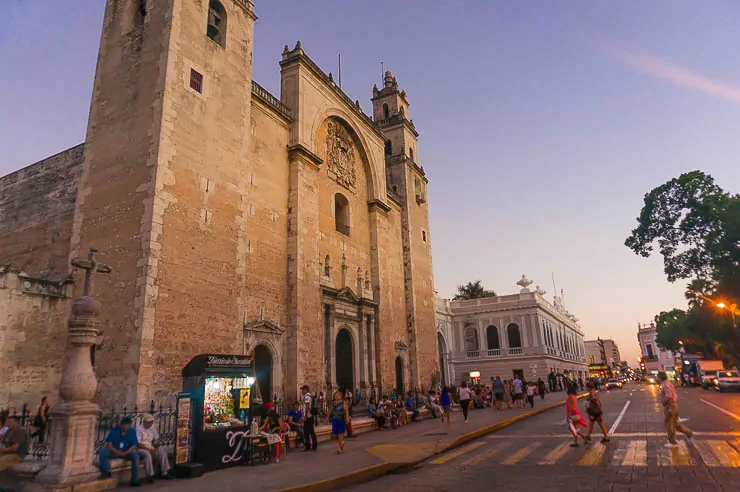
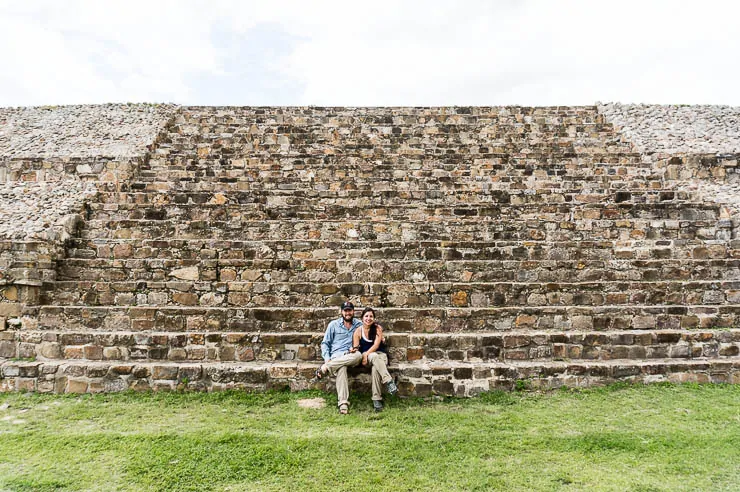
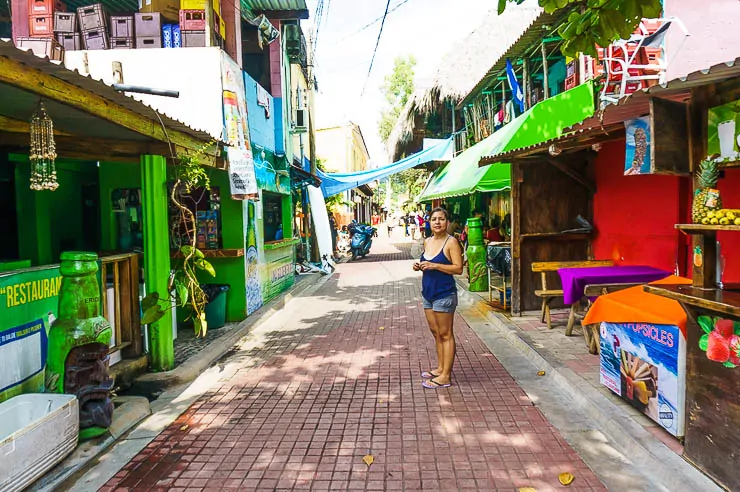
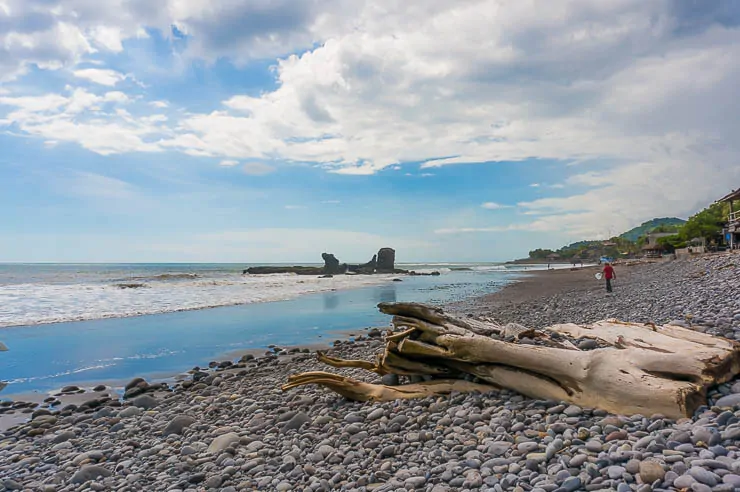
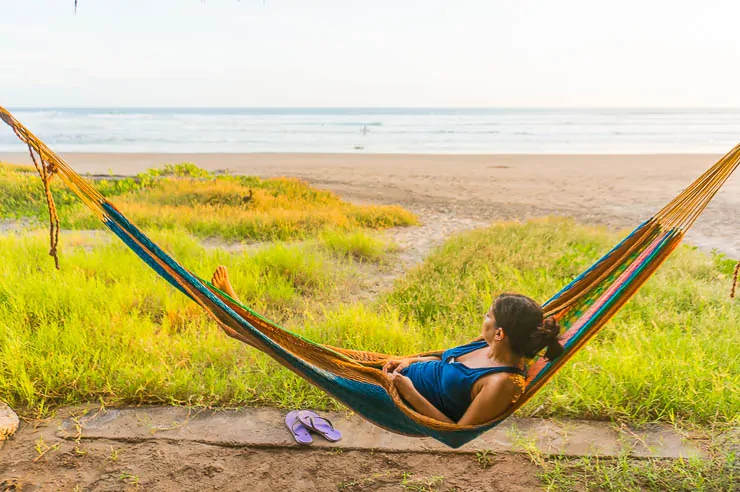
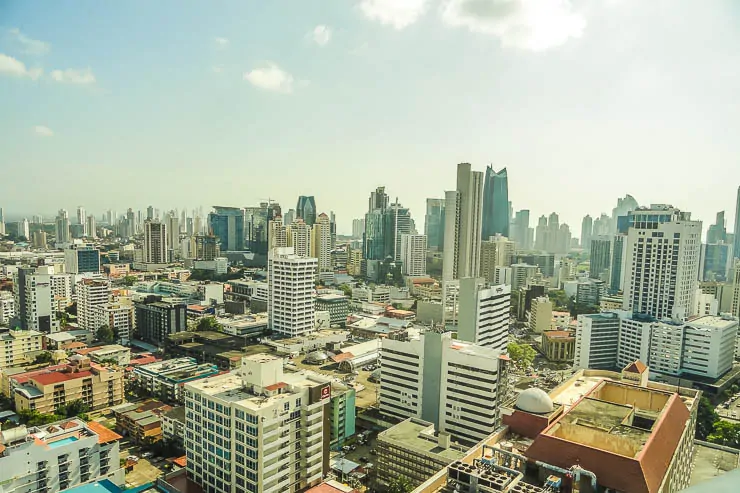
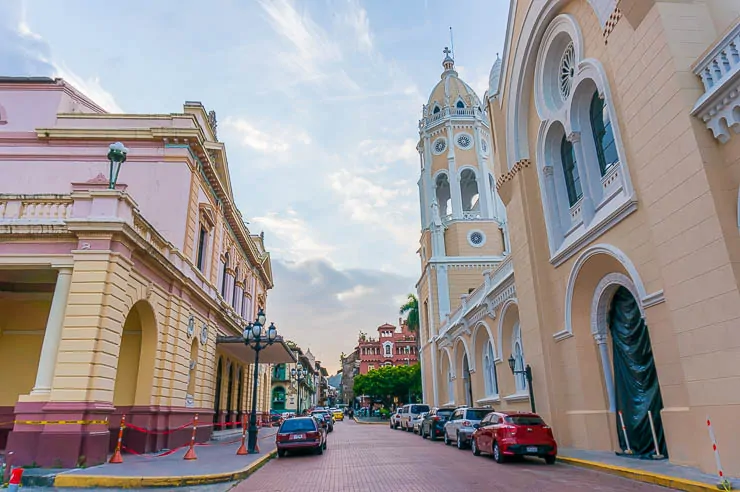
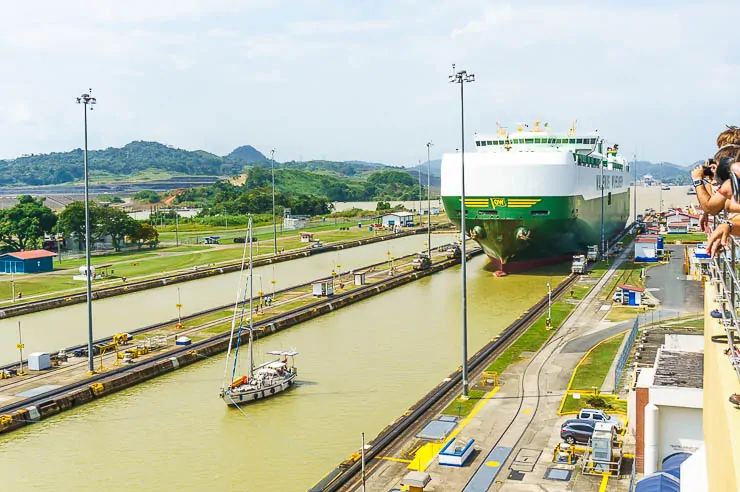
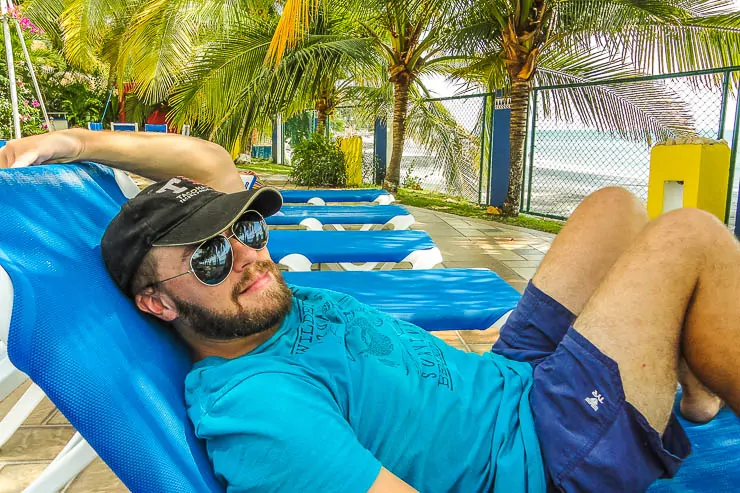
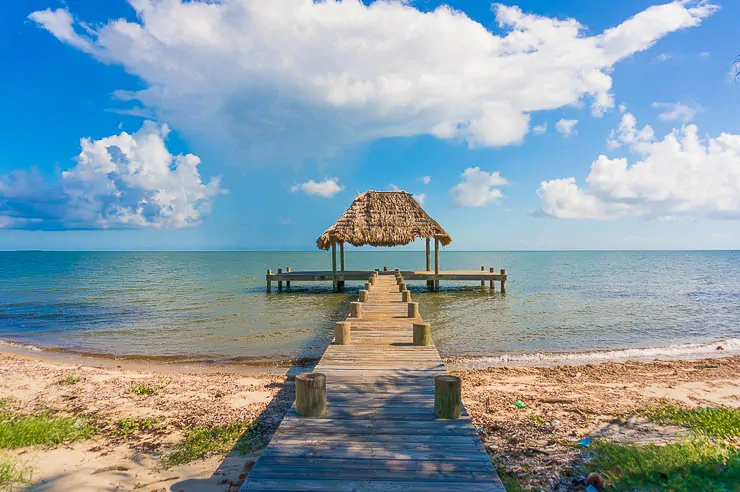
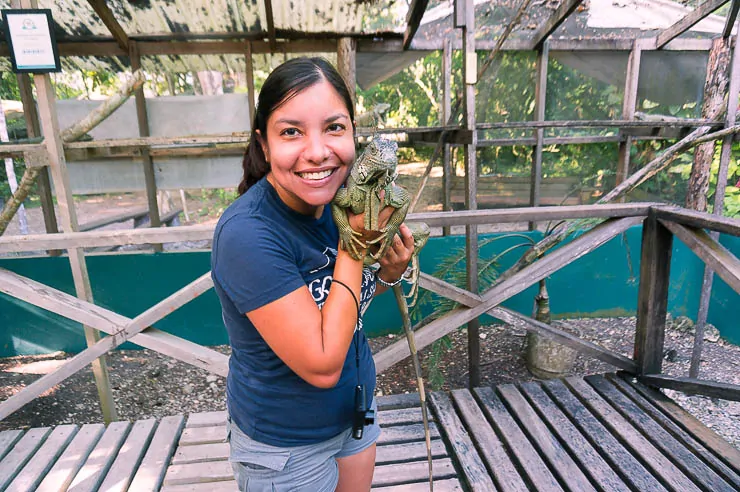
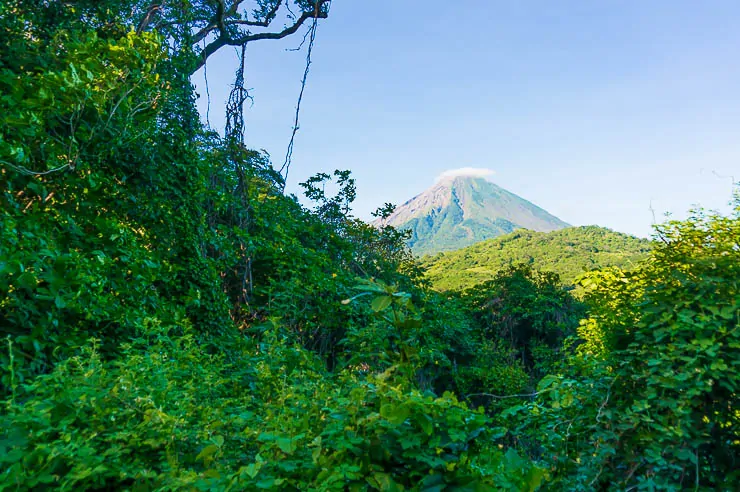
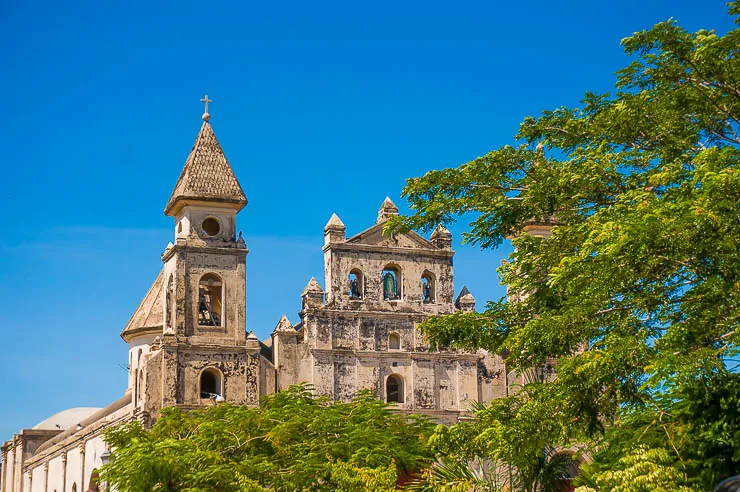
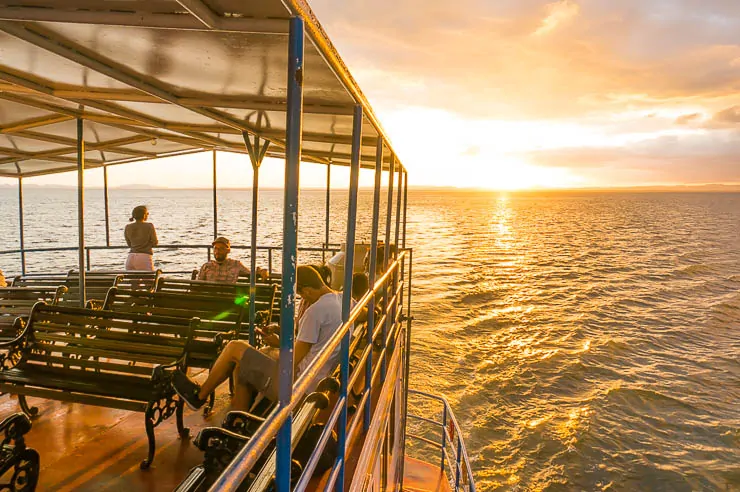
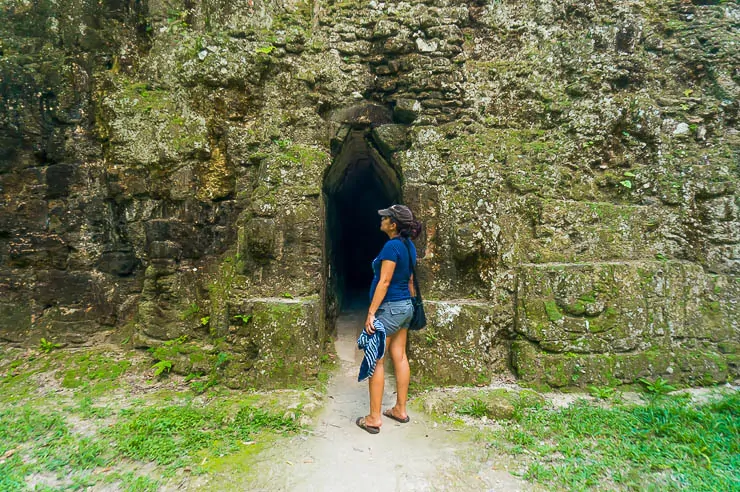
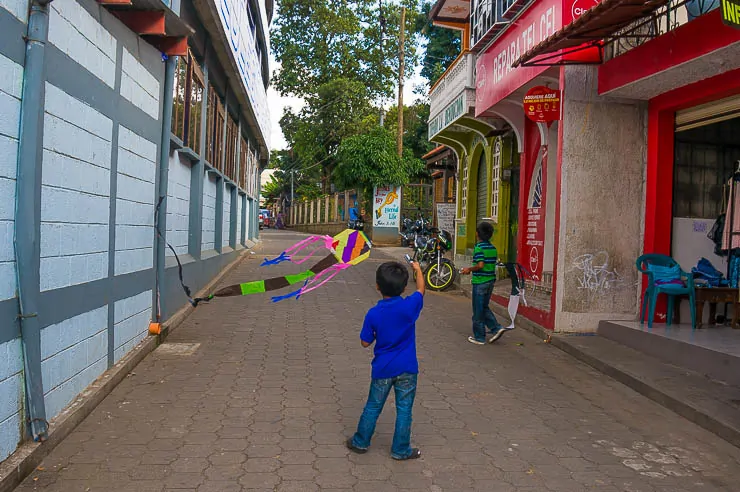
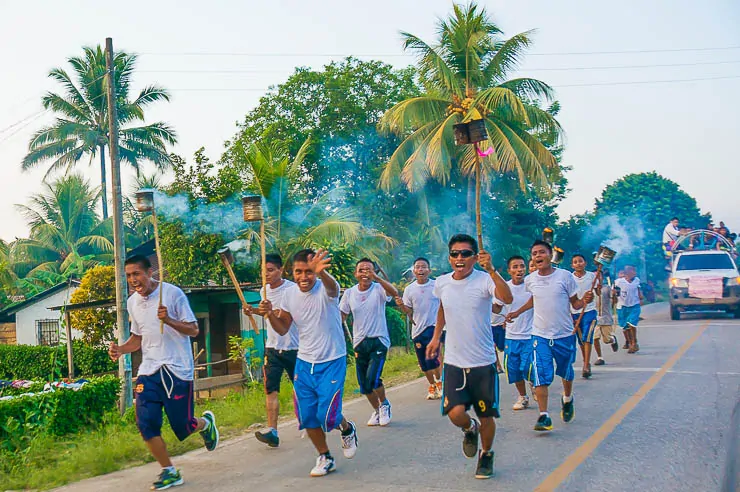
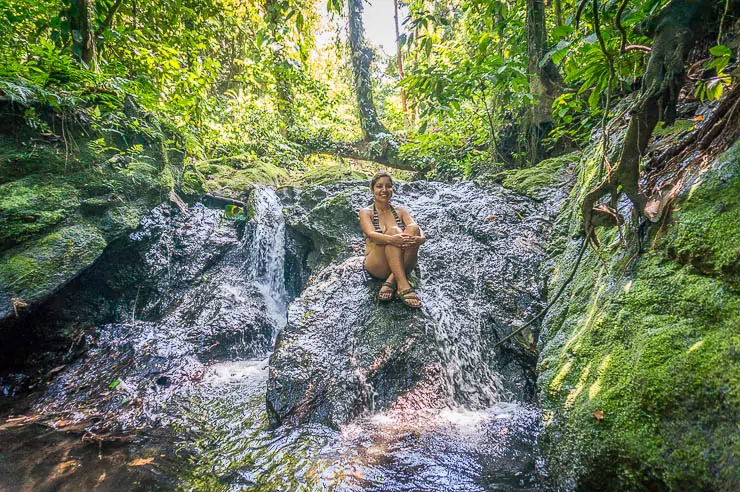
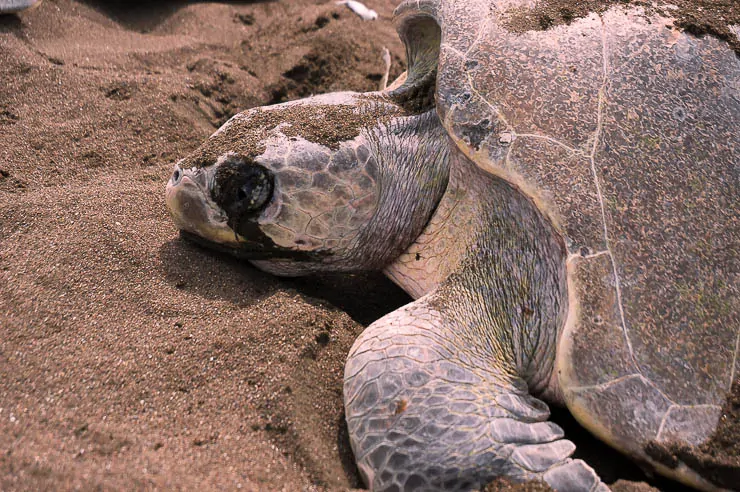
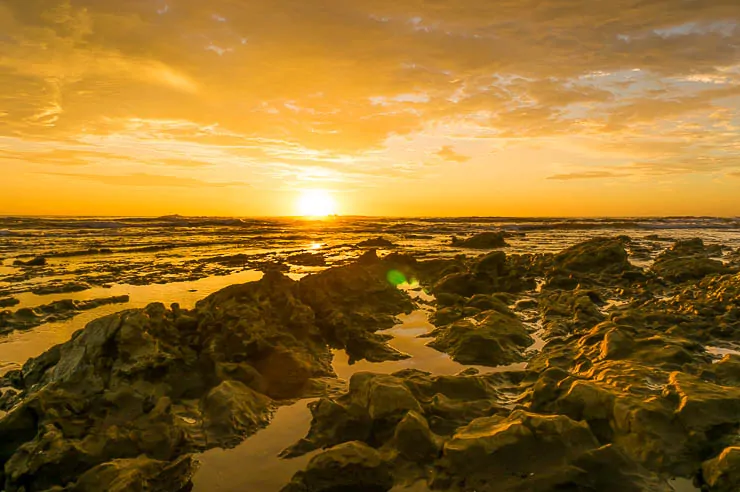
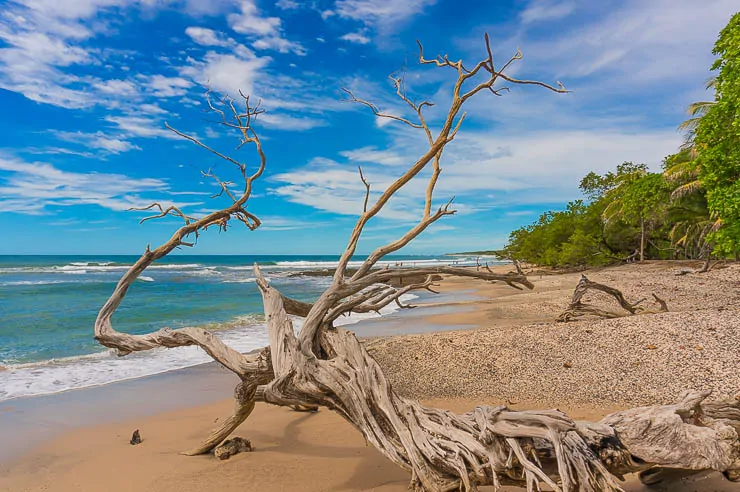
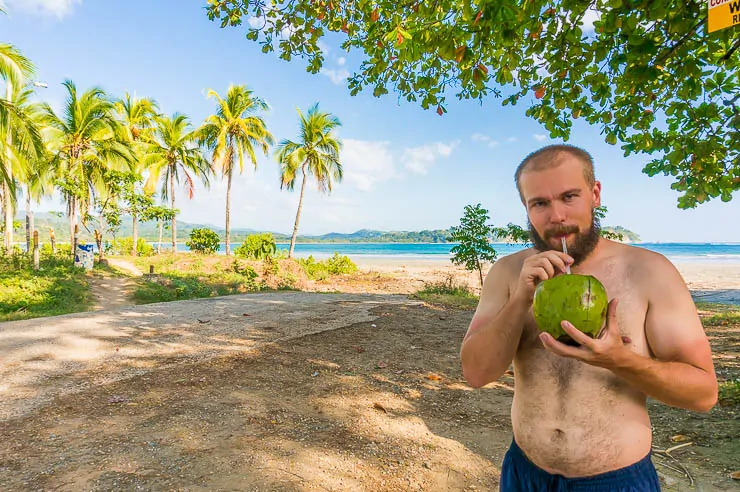
Comments 2
hi Ryan
when traveling through central america is it necesary to exchange dollars for local currency o fill up gas or hotels as needed or is dollars accepted?
also how long is the wait at border check points when crossing over countries?
thank you.
luis
Author
You can often pay with a credit card, but otherwise you would want local currency. It is possible you could pay in dollars but that would be on a case-by-case basis and subject to haggling. Much better to just pay the price in local currency and move on. In terms of border crossings, it varies by country, but you can expect maybe an hour in the fastest of cases and up to two hours or more for worst cases.